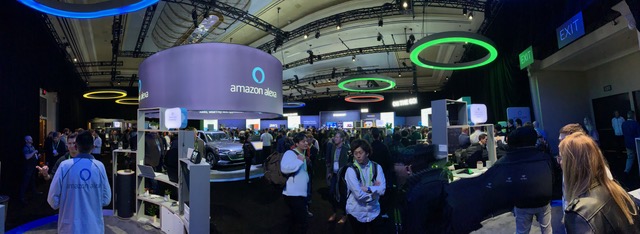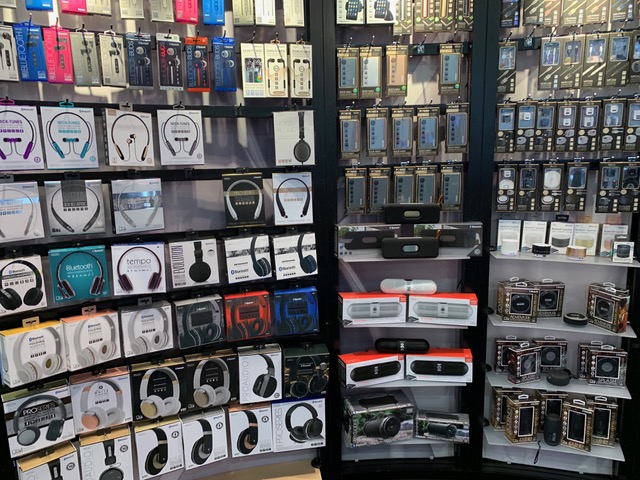This was my fifth CES in ten years, and it definitely felt busier than ever. The exhibit halls, ballrooms, and conference facilities were packed with all sorts of goodies every hour of every day, at hotels up and down the Vegas Strip — not just at the Las Vegas Convention Center and the Sands Expo. As always, restaurants and venues were packed, and halls were jammed with noise, lights, and cool things. You can read all sorts of articles on everything that was exhibited at the show, so I’ll give you my personal take on what I think the themes of the show were, from the perspective of a “smart products” guy (e.g. software and hardware = smart product).
In the past, the themes haven’t always been lasting technologies. There was the CES in the midst of the Great Recession that was all about 3DTV. No one I spoke with at that show really thought 3DTV was going much of anywhere, and it didn’t. A couple of years ago, there were some serious smart-home contenders, like Samsung, that showed a complete smart-home in their display area — from smart switches to smart ovens to smart toilets, and more. And, while smart-home isn’t going away, the idea of one vendor outfitting your entire home is not how most people are going about smartening up their home these days.
So, what were my takeaways?
1. Smart-home is still huge — from Simple’s smart garbage cans to the Alexa-equipped Kohler toilet, to the myriad vendors selling every conceivable appliance, doorbell, lock, switch, plug, sprinkler, appliance, mixer, cocktail shaker. . . Every hall had a range of smart-home-related gear. Reminiscent of Samsung two years ago, Chic, a brand I had never heard of, showed off an entire smart-home in an all-encompassing display booth in a major hall. Amazon, meanwhile, had an entire ballroom at the Venetian, showing off every conceivable Alexa-equipped device that you might imagine from vendors globally. So the smart-home is alive and well.


2. Smart fitness and body monitoring are growing dramatically — golf, running, basketball, baseball, biking, badminton, yoga, skateboarding, etc. Every possible sport or fitness effort has a smart angle to it. You can buy simple Fitbit knockoffs for less than $10, outfit your basement family room with a complete virtual Golf course or batting cage “studio,” and everything in between. Smart fitness took up a pretty big portion of the Sands Expo top floor and was sprinkled amongst all of the other show floors.
3. Smart cars and smart vehicle systems — parking lots were taken up by life-sized demo courses where electric, autonomous, and smart vehicles were showing off their capabilities to admiring crowds, driving up and down ramps, navigating around cones, and looking shiny in the sunny days CES enjoyed this year. Several halls and ballrooms were dedicated to smart cars, components and systems from major auto brands, as well as brands you wouldn’t think were in the auto business, but are looking to the future – Bosch, Baidu, Bell – just to name a random assortment of companies starting with the letter ‘B.’


4. The wireless stuff — headphones, Airpod-knockoffs, speakers, charging mats, charging stands, batteries, and so very many other small wireless things that work with your other wireless things were everywhere. It’s difficult to understand how so many companies can offer so many variations for such low prices and stay in business. But there they all are at CES showing off their colorful wares.




5. The low-cost knockoffs — this year, you will be able to get an electric skateboard for around $100 that does almost as much as the top-of-the-line ones selling for $1500 today in the US. This is true for so many technologies. While the name brands show off items that have double- and triple-digit price tags, the direct-from-Asia brands have single- and double-digit price tags for virtually the same product. What this seems to do for new products and technologies is give them a 6-12 month head-start, and then eliminate any advantage that they have after that. As we’ve seen with TVs and hoverboards, we’re now seeing with headphones, e-skateboards, e-bikes, e-scooters and just about anything else that gains any traction in major markets. Next to the South Hall, there was a new, semi-permanent, “tent” hall (about two football fields wide by three long) filled with Asia-region vendors of components, low-cost knockoffs, and original designs for fractions of the cost that we pay in major markets.

This last point is the key takeaway of this year’s show for me: if people like it, Asian companies will over-produce. Consumer electronics (the point of CES) are continuing to grow, as every product becomes electronic (whether it needs to or not), and the margins for first movers are significant enough for tens, or hundreds (or thousands) of lower-cost vendors to enter and build lower-cost versions of the same product to sell to the world. That’s good news for CES, and maybe good news for consumers (quality is often sacrificed, but hey, what do you expect for $5, $10, $20, or $50 right?), but it’s a race to the bottom for just about any manufacturer of any meaningful product. It will be interesting to see how this shapes the future of CES and consumer electronics in general.



